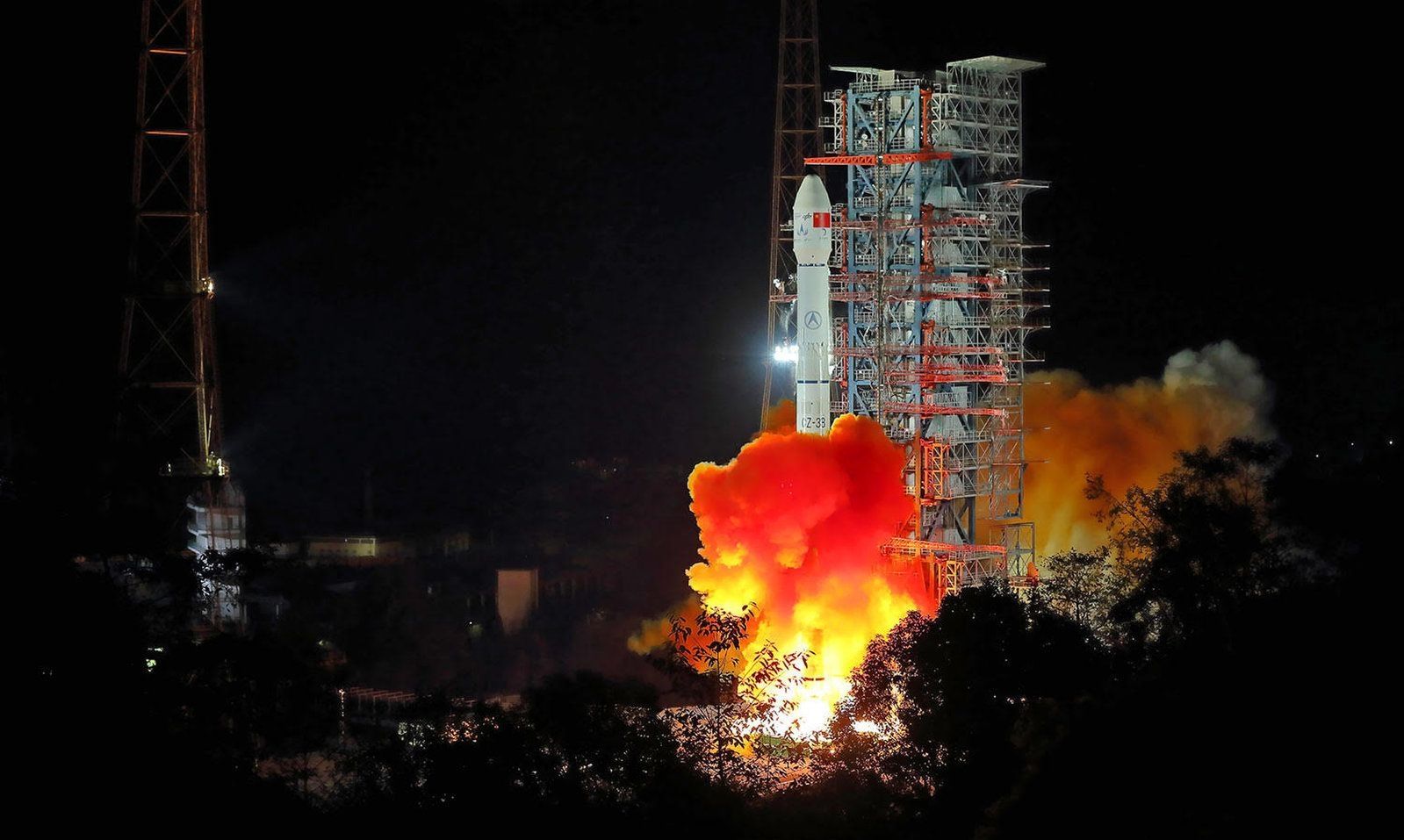First #selfie! I’m feeling healthy, energized and whole. This is me on #Mars. http://go.nasa.gov/2Qn6Pi6&h=AT3Q6ffKt6_9qmkSPTO3bdwJ0GlGXlT…Qbo516oeGQ


First #selfie! I’m feeling healthy, energized and whole. This is me on #Mars. http://go.nasa.gov/2Qn6Pi6&h=AT3Q6ffKt6_9qmkSPTO3bdwJ0GlGXlT…Qbo516oeGQ

NASA has offered to give NBA superstar Steph Curry a tour of one of its lunar labs after the Golden State Warriors guard said on a podcast that he doubts humans landed on the moon.
No, really.
Curry made the head-scratching comment on an episode of the “Winging It” podcast, which posted Monday. According to Bleacher Report, Curry brought up the subject himself during the more than hour-long podcast with fellow NBA players Vince Carter, Kent Bazemore and Andre Iguodala:

The reader uses the term “digital wallet” to mean a hosted wallet in which a trusted 3rd party holds the private keys, or aggregates the assets of many customers and tracks their individual ownership in their own accounting system, like a traditional bank or broker. In this case, the 3rd party is trusted to maintain security, privacy, and constant, robust user access.
It is possible that the reader may have used the term “digital wallet” to additionally refer to PC and smartphone applications, such as Bitcoin Core, Armory or Electrum. But, these are really personal and private wallets — because they are created and configured by the owner, and only the owner has the private keys. And so, we classify device wallet applications as “personal/private” along with hardware or paper wallets. Type 2: Personal Wallets are Private —but with privacy comes risk!
Wallets are personal if the private keys are generated and stored by the user, either on paper, in their PC or smart phone, on a thumbdrive, in a hardware wallet, or even uploaded to cloud storage. As long as the asset owner holds the keys and securely encrypted any uploaded file that contains the keys, the assets are accessible only with his consent.
So, which wallet class is better for securing cryptocurrency access credentials? Custodial or Personal? Which of these models best fits your needs? 2. Deciding Factor
There are few individuals for whom direct and private ownership makes sense. In fact, until this month, it did not make sense for me. I am only now configuring my first hardware wallet. I still trust Coinbase to host and control most of my assets. The reasons boil down to security, forgetfulness, errors, legacy ownership and instant access. The ONLY factor that is arguably better with personal custody & control is privacy.
Due to a lack of education, standards, and definitive best practices, this option makes sense for fewer than 5% of Bitcoin owners. Take me, for example… I have been involved with Bitcoin since the first years of its existence, and have been a Bitcoin educator since shortly after Satoshi’s original bombshell. Today, I am a keynote presenter at blockchain and cryptocurrency conferences. I teach blockchain seminars, design courseware for colleges, and am co-chair of the Cryptocurrency Standards Association and partner in Blockchain Research Council.
Yet, I am only now configuring my first hardware wallet. I still trust Coinbase to host and control most of my cryptocurrency.
How do I know if I am a candidate for full / private control?
Using an exchange hosted wallet service is best for most individuals. But, for some, it makes sense to maintain private, local control of blockchain assets. If all criteria in the bulleted list below applies to you, then local and private ownership might make sense. But if you fail even one criteria, then WAIT! Wait until multisig becomes uniform and ubiquitous — and wait until a larger fraction of society is comfortable with the concept and practice of managing private keys. These are gradually becoming new norms. But, it will take a few more years for the world to become comfortable with an unfamiliar concept: personal control of a decentralized asset. You are a candidate for using a personal wallet if you plan to control and secure your own private keys, and if you meet all conditions listed below. The technical criteria will not be requisite in the future—but they are necessary today, because the market currently lacks simple, standardized, widespread tools and uniform practices for safely securing, accessing and passing on these credentials to your heirs. Do all of these criteria apply to you?
2. Deciding Factor
There are few individuals for whom direct and private ownership makes sense. In fact, until this month, it did not make sense for me. I am only now configuring my first hardware wallet. I still trust Coinbase to host and control most of my assets. The reasons boil down to security, forgetfulness, errors, legacy ownership and instant access. The ONLY factor that is arguably better with personal custody & control is privacy.
Due to a lack of education, standards, and definitive best practices, this option makes sense for fewer than 5% of Bitcoin owners. Take me, for example… I have been involved with Bitcoin since the first years of its existence, and have been a Bitcoin educator since shortly after Satoshi’s original bombshell. Today, I am a keynote presenter at blockchain and cryptocurrency conferences. I teach blockchain seminars, design courseware for colleges, and am co-chair of the Cryptocurrency Standards Association and partner in Blockchain Research Council.
Yet, I am only now configuring my first hardware wallet. I still trust Coinbase to host and control most of my cryptocurrency.
How do I know if I am a candidate for full / private control?
Using an exchange hosted wallet service is best for most individuals. But, for some, it makes sense to maintain private, local control of blockchain assets. If all criteria in the bulleted list below applies to you, then local and private ownership might make sense. But if you fail even one criteria, then WAIT! Wait until multisig becomes uniform and ubiquitous — and wait until a larger fraction of society is comfortable with the concept and practice of managing private keys. These are gradually becoming new norms. But, it will take a few more years for the world to become comfortable with an unfamiliar concept: personal control of a decentralized asset. You are a candidate for using a personal wallet if you plan to control and secure your own private keys, and if you meet all conditions listed below. The technical criteria will not be requisite in the future—but they are necessary today, because the market currently lacks simple, standardized, widespread tools and uniform practices for safely securing, accessing and passing on these credentials to your heirs. Do all of these criteria apply to you?
Philip Raymond co-chairs CRYPSA, hosts the Bitcoin Event and is keynote speaker at Cryptocurrency Conferences. He advises The Disruption Experience in Singapore, sits on the New Money Systems board of Lifeboat Foundation and is a top writer at Quora. Book a presentation or consulting engagement.

The first-ever surface mission to the far side of the moon is underway.
China’s robotic Chang’e 4 spacecraft streaked away from Earth today (Dec. 7), launching atop a Long March 3B rocket from the Xichang Satellite Launch Center at about 1:23 p.m. EST (1823 GMT; 2:23 a.m. on Dec. 8 local China time).
If all goes according to plan, Chang’e 4 will make history’s first landing on the lunar far side sometime in early January. The mission, which consists of a stationary lander and a rover, will perform a variety of science work and plant a flag for humanity in a region that remains largely unexplored to date. [China’s Chang’e 4 Moon Far Side Mission in Pictures].

Not surprising I suppose, and also good…to have a kind of counter article soon in the same magazine.
A recent proposal about consciousness is fascinating—but it’s not science.


There’s a cool doubleheader in outer space this week: In addition to the fly-by of comet 46P/Wirtanen over the weekend, the often spectacular Geminid meteor shower will also make its annual appearance Thursday.
With hundreds of meteors streaking across the night sky, the Geminids are often the best meteor shower of the year. “The reliable Geminid shower counts as one of the year’s best, peppering the nighttime sky with 50–120 meteors per hour at its peak,” noted EarthSky.org.
More good news: The crescent moon will set around 10:30 p.m., leaving the rest of the night moon-free, Astronomy.com said. Observers under a clear dark sky can expect to see an average of two per minute.
LIVE: Google CEO Sundar Pichai testifies before Congress on the company’s data collection practices.

by Eloisa Marchesoni
Today, I will talk about the recent creation of really intelligent machines, able to solve difficult problems, to recreate the creativity and versatility of the human mind, machines not only able to excel in a single activity but to abstract general information and find solutions that are unthinkable for us. I will not talk about blockchain, but about another revolution (less economic and more mathematical), which is all about computing: quantum computers.
Quantum computing is not really new, as we have been talking about it for a couple of decades already, but we are just now witnessing the transition from theory to realization of such technology. Quantum computers were first theorized at the beginning of the 1980s, but only in the last few years, thanks to the commitment of companies like Google and IBM, a strong impulse has been pushing the development of these machines. The quantum computer is able to use quantum particles (imagine them to be like electrons or photons) to process information. The particles act as positive or negative (i., the 0 and the 1 that we are used to see in traditional computer science) alternatively or at the same time, thus generating quantum information bits called “qubits”, which can have value either 0 or 1 or a quantum superposition of 0 and 1.

Mild cognitive impairment (MCI) is an intermediate stage between the expected cognitive decline of normal aging and the more-serious decline of dementia. It can involve problems with memory, language, thinking, and judgment that are greater than normal age-related changes.
If you have mild cognitive impairment, you may be aware that your memory or mental function has “slipped.” Your family and close friends also may notice a change. But generally these changes aren’t severe enough to significantly interfere with your day-to-day life and usual activities.
Mild cognitive impairment may increase your risk of later progressing to dementia, caused by Alzheimer’s disease or other neurological conditions. But some people with mild cognitive impairment never get worse, and a few eventually get better.